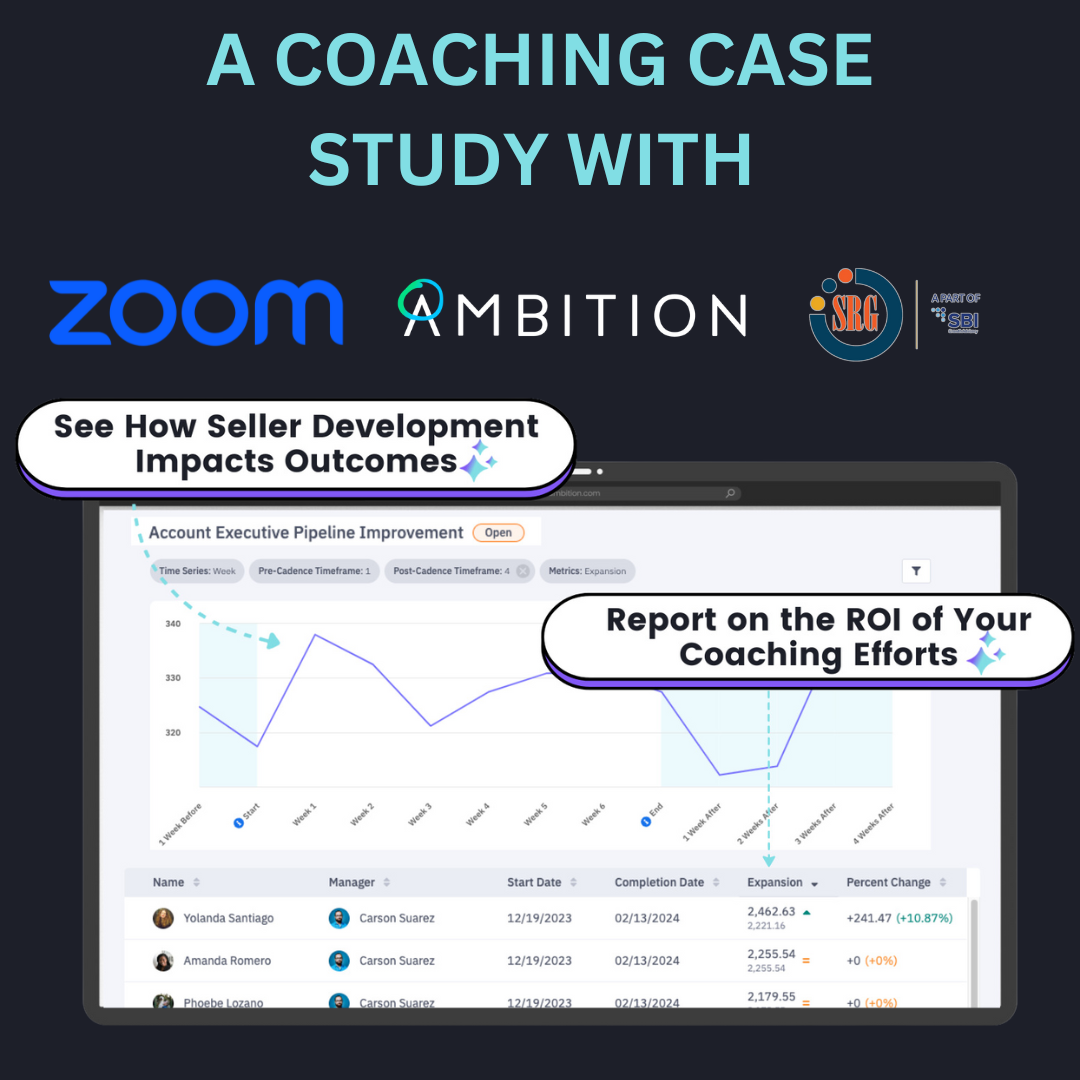How does sales force turnover impact the balance sheet? Here's a long, hard look at the relationship between effective performance management and successful sales operations.
The War for Talent is becoming an increasingly hot topic of discussion in the Sales World. And for good reason. Many sales teams -- especially those with an inside sales focus -- are taking on legions of new Millennials, often straight out of college. And as found by Strategic Revenue Partners, the turnover rate of sales staff, measured across multiple industries, amounts to 87% over a 4 year period.
More disconcertingly, and as Sales and HR leaders are all too well aware, the costs associated with onboarding, engaging and retaining sales personnel is growing higher and higher.
How Sales Turnover Impacts Bottom Lines
From an overarching standpoint, experts ranging from Strategic Revenue Partners to Katherine Gramm-Levis to Matt Hottle estimate direct costs of turning over one sales rep (lost productivity, time spent hiring, training and orientating a new rep alongside customer loss) to be around "150% of the annual salary or 200% of the annual salary if the position is vacant for more than 90 days."
The purpose of this post is to discuss the actual costs of sales turnover and assess ways that you can minimize balance sheet costs associated with unwanted personnel changes. We'll do so by breaking costs down into individual chunks, starting with the costs of actual hiring and onboarding a new sales rep.
Hiring and Onboarding
According to Strategic Revenue Partners, "the time associated with hiring a new sales person is upwards of 100 hours," taking into account "sourcing candidates, resume review, interviews, reference checks & administrative support."
Once the new hire joins the sales force, he or she can be expected to contribute somewhere "between 25% and 50% of the standard productivity level for the first 12 weeks."
Consequently, the first steps to minimizing new hire costs is to discern your company's average ramp time and figure out a playbook for minimizing that ramp time.
For one example, the Harvard Business Review found in The New Science of Sales Force Productivity that SAP was able to analyze "how long it takes for new reps to become productive [...] how their productivity increases after that [and] determine the average productivity rate for seasoned reps."
Doing so had a beneficial impact in several ways. First, it helped managers "staff their segment territory plan more effectively." Second, it helps them know more quickly when a new hire isn’t meeting the standard. As noted by SAP CEO Bill McDermott in the article, "People generally reach[ed] their productivity plateau at 12 months. If they are not there, they are not going to get there. And that’s about 10% of our new hires.”
To improve new hire onboarding and ramp time, sales leaders should also have codified, automated performance expectations put in place. As found by the Harvard Business Review, top-performing sales teams minimize onboarding costs by codifying, tracking and enforcing their sales process better than anyone else. Doing so is the quickest way to ramp new hires up to full productivity.
Engagement and Retention
Engagement and retention is the equally vital flip side of the sales turnover coin. Just as you need to hire and ramp up sales personnel as efficiently as possible, you must ensure that your existing personnel are fully engaged and feel encouraged to remain loyal to your company.
From an engagement standpoint, a 2014 Employee Engagement survey from TINYpulse has some actionable, surprising insights on how to cultivate an engaging work environment. According to their report, "peers, not money, are the number one reason why workers go the extra mile," as 70% of employees "credited their peers for creating an engaging environment, while perks such as work functions, parties, or amenities only accounted for 8%."
Peer recognition, it turns out, is also something that may be more easily achieved than initially thought. As found in the report, “employees want to recognize their peers. When someone feels valued, they’re more likely to rate their colleague with a higher score.” Turning to retention, experts have found that engagement goes hand-in-hand with both employee recognition and retention. "Retention is tied to recognition – yet a significant majority of employees (79%) “don’t feel strongly valued for the work they put in.”
And aside from peer recognition, the experts at HBR find the best forms of recognition -- that also impact retention -- are data-driven. As stated in the New Science of Sales Force Productivity article, "[t]he key to retention is to set people up to succeed. That shouldn’t be a matter of good fortune; it should be a result of data-driven planning."
Using data, a sales force leader can empower reps to feel more "plugged in" to the sales process itself. According to the article, "every successful company we studied measures inputs a rep’s pipeline, time spent prospecting, or specific sales calls completed as well as outputs, thereby helping the reps stay on top of the process."
In the words of SAP's CEO Bill McDermott, “If you’re not looking at the in-process measures and you’re simply looking at the results [and] you’re missing the most important element, which is the future.” To that effect, it behooves sales leadership to codify and actively promote methods of peer-based, data-driven engagement and recognition.
Such initiatives, be they team sales contests (found by the Harvard Business Review to be much more successful than sales leaderboards), tailored compensation systems or otherwise, can achieve high impacts on sales turnover costs when used effectively in one's sales force.
Minimize Costs of Sales Force Turnover
Sales Performance Management is costly enough as it is. Take the above analysis to heart and look for new ways to decrease the costs associated with hiring, onboarding, engaging and retaining your sales talent.
To recap, we'll leave you with a few overarching best practices that transcend all four aspects of sales performance management:
- Maintain a data-driven sales force.
- Codify, track and enforce performance benchmarks.
- Understand and predict optimal ramp time.
- Make recognition and coaching a social, peer-driven exercise.
- Tie-in engagement and recognition with real-time performance data.
The 360° Sales Management & Productivity Platform
Ambition is a sales management platform that syncs every sales organization department, data source, and performance metric on one easy system.
Ambition clarifies and publicizes real-time performance analytics for your entire sales organization. Using a drag-and-drop interface, non-technical sales leaders can build custom scorecards, contests, reports, and TVs.
Ambition is endorsed by Harvard Business Review, AA-ISP (the Global Inside Sales Organization), and USA Today as a proven solution for managing millennial sales teams. Hear from our customers below.
Watch Testimonials:
- FiveStars: Adam Wall. Sr. Manager of Sales Operations .
- Filemaker: Brad Freitag. Vice-President of Worldwide Sales.
- Outreach: Mark Kosoglow. Vice-President of Sales.
- Cell Marque: Lauren Hopson. Director of Sales & Marketing.
- Access America Transport: Ted Alling. Chief Executive Officer.
Watch Product Walkthroughs:
- ChowNow. Led by Vice-President of Sales, Drew Woodcock.
- Outreach. Led by Sales Development Manager, Alex Lynn.
- AMX Logistics. Led by Executive Vice-President ,Jared Moore.
Read Case Studies:
- Clayton Homes: HBR finds triple-digit growth in 3 sales efficiency metrics.
- Coyote Logistics: Monthly revenue per broker grew $525 in 6 months.
- Peek: Monthly sales activity volume grew 142% in 6 months.
- Vorsight: Monthly sales conversations grew 300% in 6 months.
Contact us to learn how Ambition can impact your sales organization today.
 Back
Back



